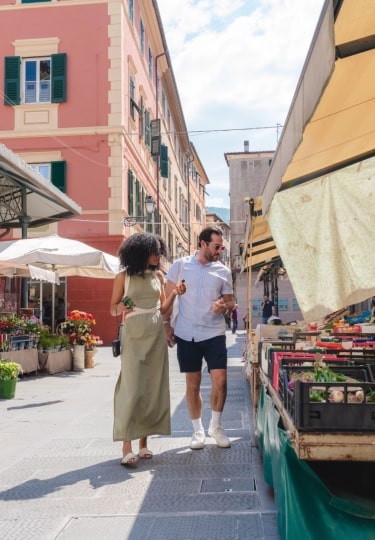What to pack for Italy, in the summer or fall, is a cinch compared to traveling somewhere with changeable weather such as the UK or Iceland. And with the Italian flair for fashion, you can leave out much of the cumbersome bad weather gear and instead fill your suitcase full of your favorite looks.
In the summer, from the pastel-colored towns of the Italian Riviera to the buttercup-yellow beaches of southern Sicily, the weather is predictably hot and sunny. The occasional rain shower can happen, but it’s usually localized, short, and often quite welcome. The clouds part, the sun returns, and the freshly washed walls of the Cinque Terre burn even more brightly.
In the fall, Italy’s scorching August temperatures ease. This is often the best time to travel to the country, with still glorious weather but fewer high-season crowds. You may have to add more items to your Italy packing list to ensure your al fresco dining is free from chills, but otherwise, the proposition is not greatly changed from that of a summer wardrobe.
Sun Hat
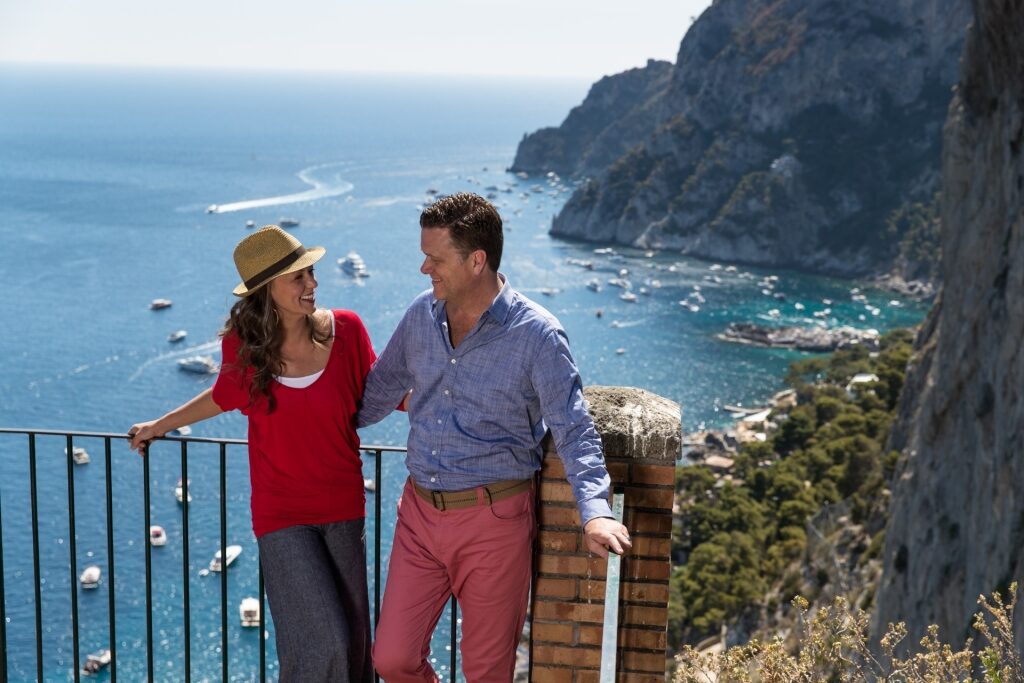
Capri
There are a reliable 300 days of sunshine in the Italian Riviera—and that’s a region in the northwest of Italy. The south is even hotter.
As such, packing a sun hat is important. You’ll need it when you enter the sun-filled Piazza della Signora on an art tour, or while on gentle hikes in Italy, such as in the countryside.
From a fashion perspective, anything goes, from baseball caps to fedoras, although breathable, natural materials are a bonus.
Comfortable Walking Shoes
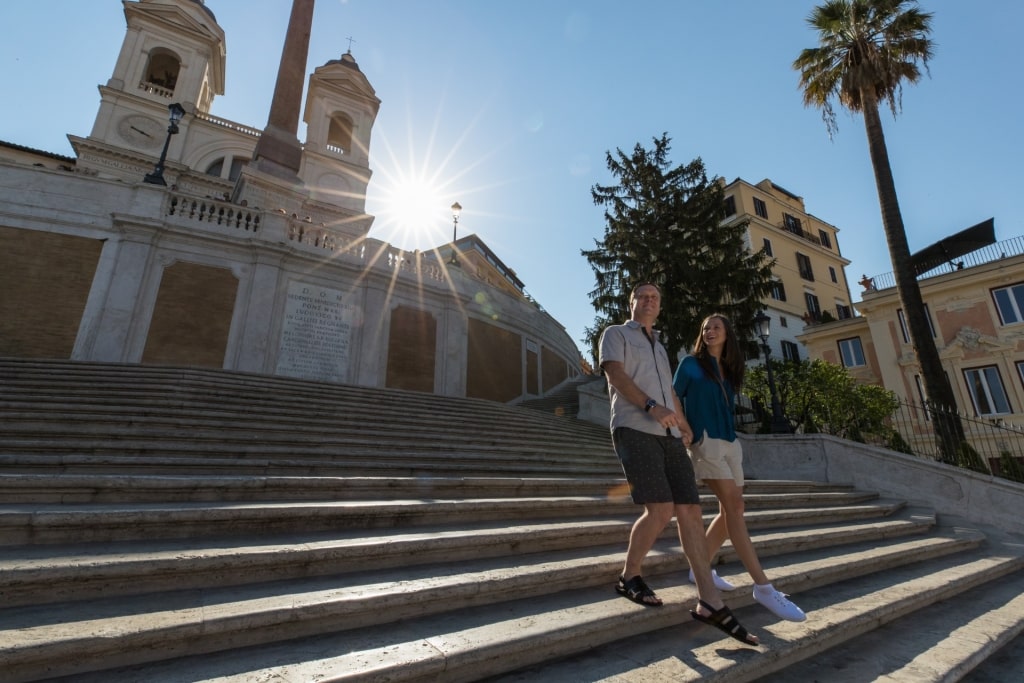
Spanish Steps, Rome
This is probably the single most important item in your suitcase. Italian cities are walking cities.
A good pair of breathable, waterproof shoes is ideal for hiking up the Spanish Steps or navigating the cobbles of Naples’ Spanish Quarter. Ensure they have good grips in case of spilled espresso, the Italian banana skin, or a slippery quayside in Livorno’s Little Venice.
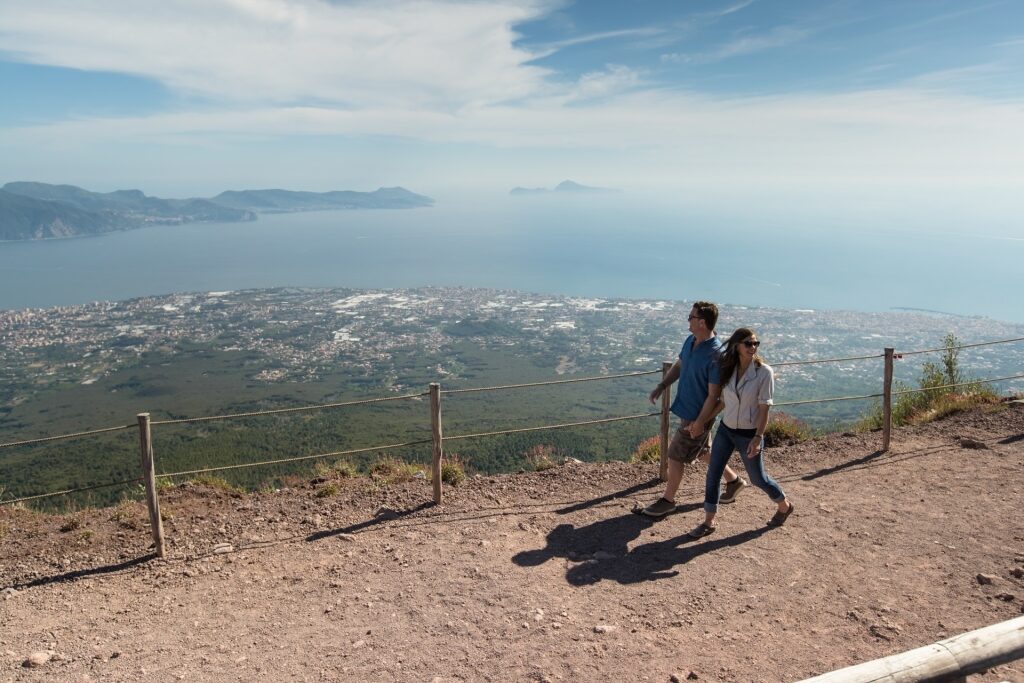
Mount Vesuvius
For any walk a little more rugged, a pair of comfortable hiking shoes is all that’s required when visiting Italy. Its semi-rural paths—such as those connecting the towns of the Amalfi Coast or the Cinque Terre—are mostly well-maintained and not too rough.
A pair of hiking shoes that combines both comfort and sturdiness is perfect.
Read: Cinque Terre vs. Amalfi Coast: Which Should You Visit?
Sunscreen
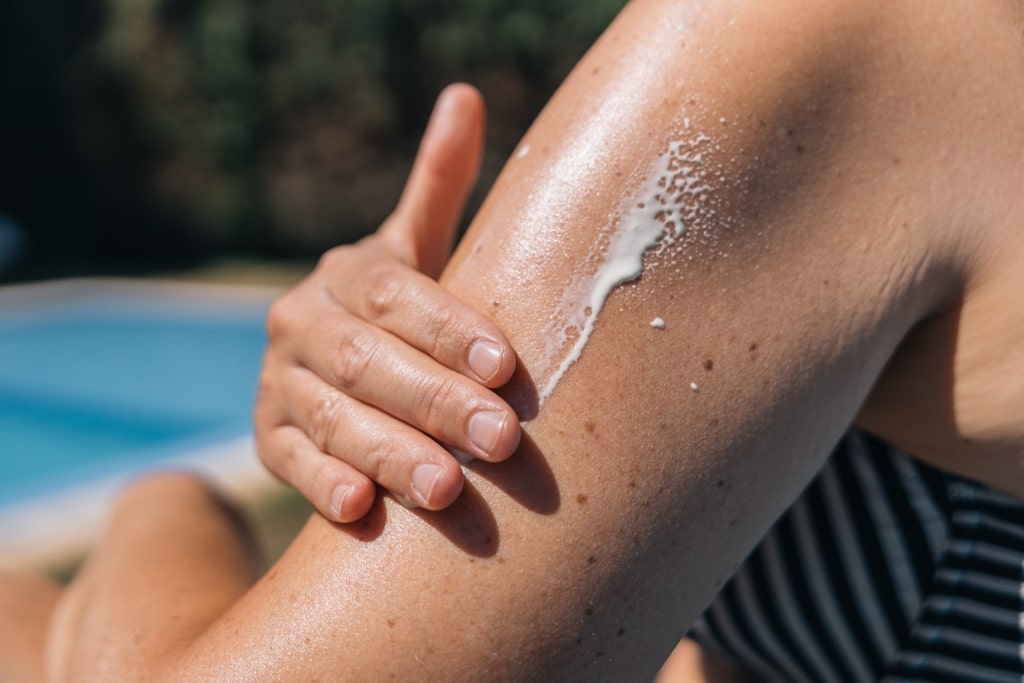
Sunscreen
An essential while traveling in Italy, you’ll need sunscreen whether you’re basking on Positano Beach or exploring the cobblestoned lanes of Trastevere in Rome.
The sun is so strong during summer in Italy that Italians, like the Spanish, have their own form of the “siesta” called the “riposo”.
There’ll likely be no “riposo” on your busy schedule, so make sure you’ve got some high-factor sunblock to ensure you stay protected. Even in early fall, the sun can still be quite strong, so sunscreen is always one of the first items on your what to pack for Italy list.
Swimsuit
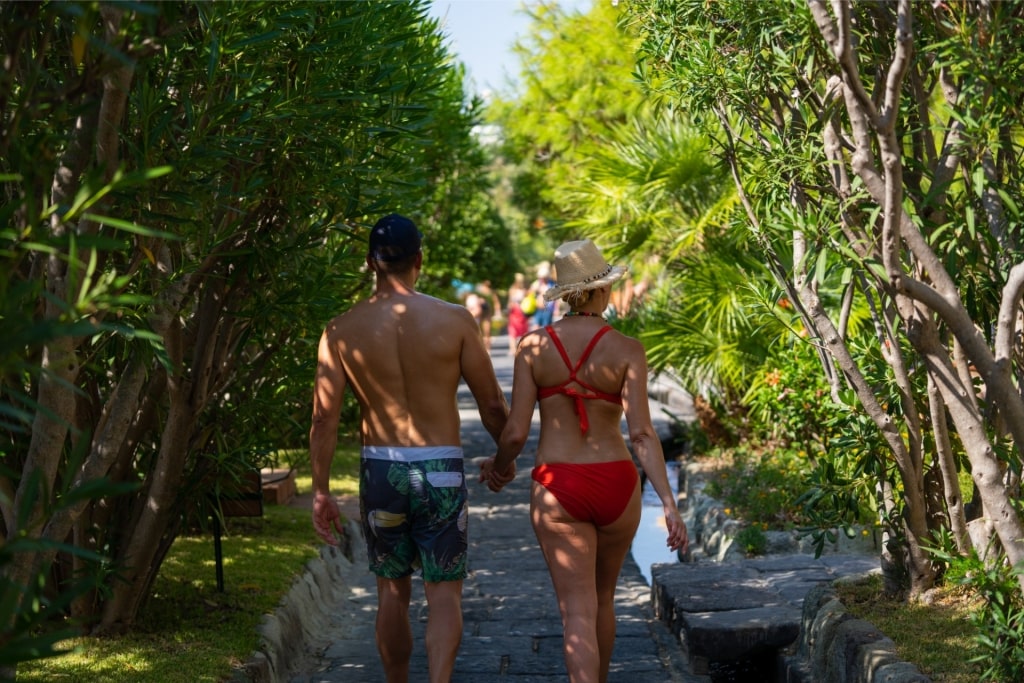
Naples
In September, the water in Sicily is still around 77°F. Up north, near the exclusive beach clubs of Paraggi Bay in Liguria, the water is on average six degrees cooler, but with warm daytime temperatures, it’s still very pleasant. So your swimsuit is essential on any trip to Italy, whatever the month.
In terms of style, anything goes, as the continued popularity of the Speedo among Italian men of a certain age demonstrates. Italian women tend to be stylish and you can’t go wrong with a floaty coverup for the beach if you want to blend in.
Sunglasses
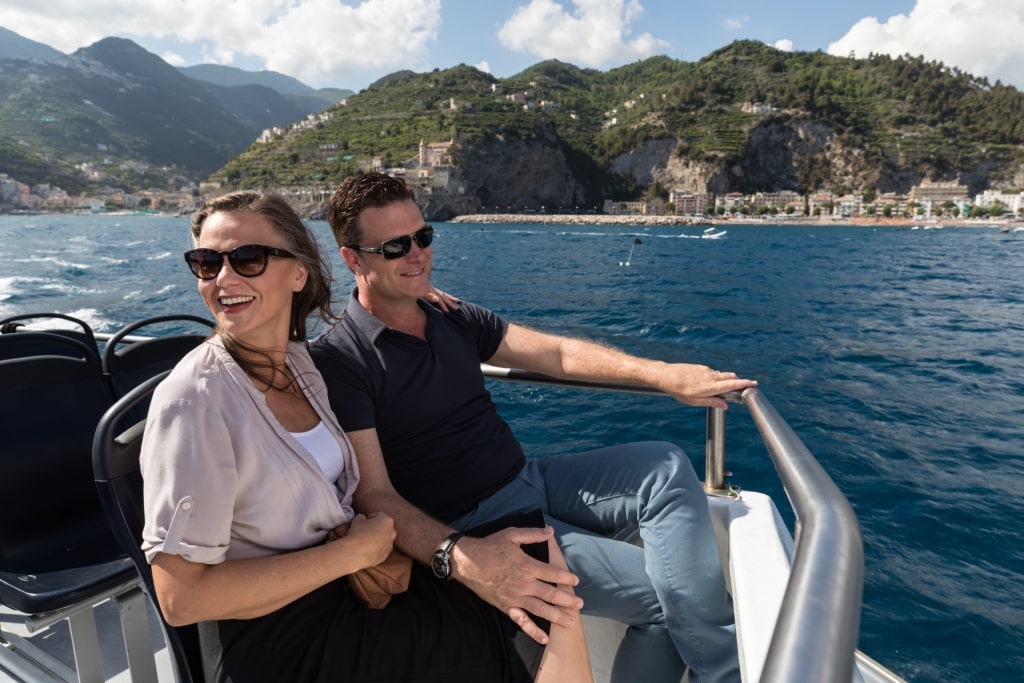
Amalfi
Essential for protecting your eyes against the sun glittering on the Tyrrhenian Sea or shining off the chrome of a passing Vespa, sunglasses in Italy are nearly as sacred as the cross.
Polarized lenses are preferable for protecting against UV rays, and helpful for spotting rocks when you’re wading in the turquoise shallows.
Layers

Lucca
If you’re visiting Italy in early fall, quite often all you need to wear on your upper body is a t-shirt or something similarly light during the day.
Add in a couple of long-sleeved layers—cardigans, overshirts—and you’ll be prepared for pretty much all eventualities in the Italian fall.
Breathable fabrics like cotton add that extra layer of comfort, so you can focus on the physical discomfort depicted in the Caravaggio before you, rather than your own.
Light, Waterproof Jacket
If you’re packing layers and only traveling in the fall or summer, a light, waterproof jacket is all that’s necessary when considering what to pack for Italy.
Helpfully portable for when you’re walking around in balmy weather, a light jacket is the perfect item to throw on if there’s a stiff sea breeze on the crossing to Capri, or while joining the passeggiata along the promenade in Santa Margherita.
Down or Fleece Vest
Portable and warm without being suffocating in milder conditions, a down or fleece vest is an ideal item for Italy in the fall. You’ll be in good company, as these insulated vests are hugely popular with Italians.
A vest is perfect for keeping out the chill on a morning beach walk, or while sipping an aperitivo at a beach bar.
Sweaters

Rome
It’s always good to carry a medium-weight sweater while traveling, in case of an unseasonal chill. However, you can usually get away with only a light sweater or a cardigan to combine with layers when visiting Italy in September or October.
Read: Italy in October
Scarves
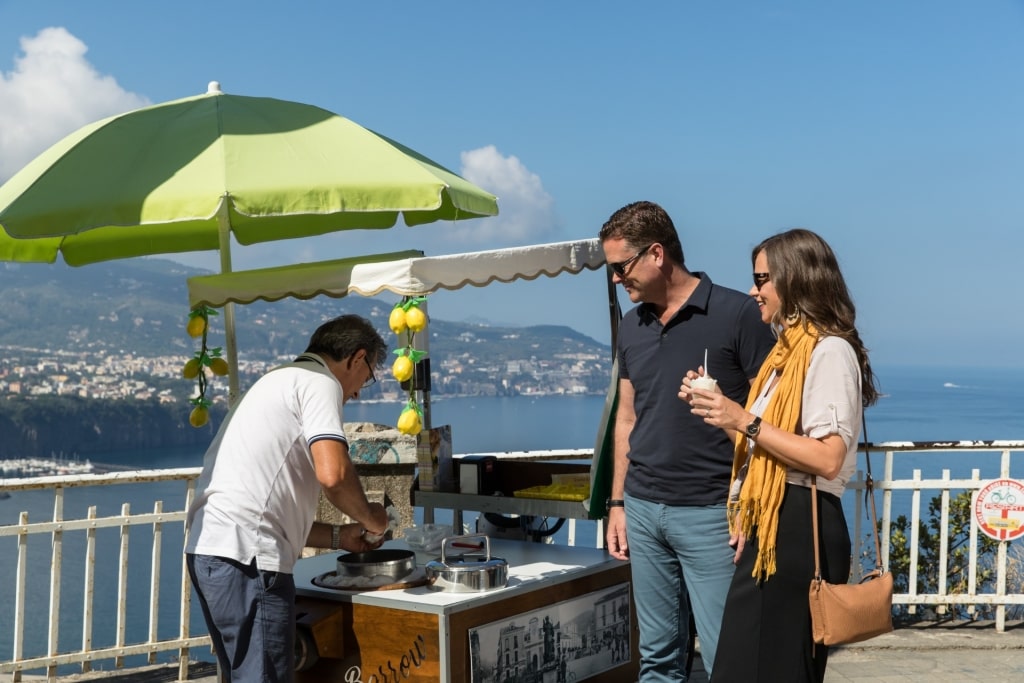
Amalfi
Combining practicality with style, a scarf/vest combination can do the work of multiple layers. What weight of scarf you’ll require depends on where in the country you’re traveling and when.
To solve the conundrum, you could just wait until you arrive in Italy to pick up a scarf. They are often sold in abundance on seafront stalls along the promenades or at boutiques in beautiful small cities such as Lucca.
This wait-and-see approach also allows you to observe the Italians, to see what they’re wearing, so you can acquire the latest style.
Umbrella
An umbrella is always a good standby. The rain in Italy can present itself as a dramatic downpour, so, even with a trusty raincoat, it’s good to have a small, portable umbrella on hand so you’re not drenched.
Camera With Wide-Angle Lens
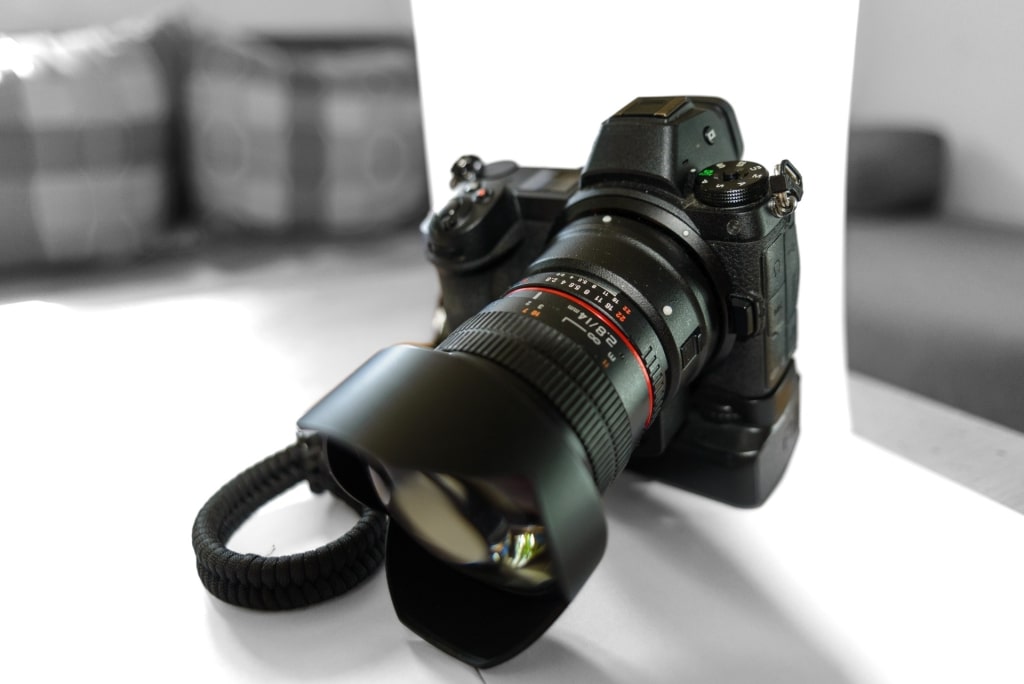
Camera
If you’re a photographer, this will probably be first on your list. If you’re not, you’ll most likely already be the owner of a smartphone that is equipped with an excellent camera.
The technology has shrunk dramatically in recent years, so lugging a weighty SLR up to the top of the Leaning Tower of Pisa is no longer the only answer for top-quality images.
But before you travel, make sure that your smartphone is going to be able to offer you everything you want from a camera. Of course, it’ll be brilliant for saturating your socials with wonderful holiday selfies, but will you be able to print them off, to a suitable size for framing, when you return home?
Italy also suits a wide-angle lens. Its medieval streets are narrow, and you can’t take too many steps backward to fit in the entire image. Smartphone tech is improving in this area, but for the best quality image, an interchangeable lens system is still recommended.
Backpack
A small day pack is extremely useful for carrying around all your necessities when on walking tours. Experiment with what you think you’ll need and try to find a good size while at home—too large a backpack, and it can become a burden.
Multi-compartments are useful for finding things quickly, and if it’s waterproof as well, that’s a bonus, especially in the fall.
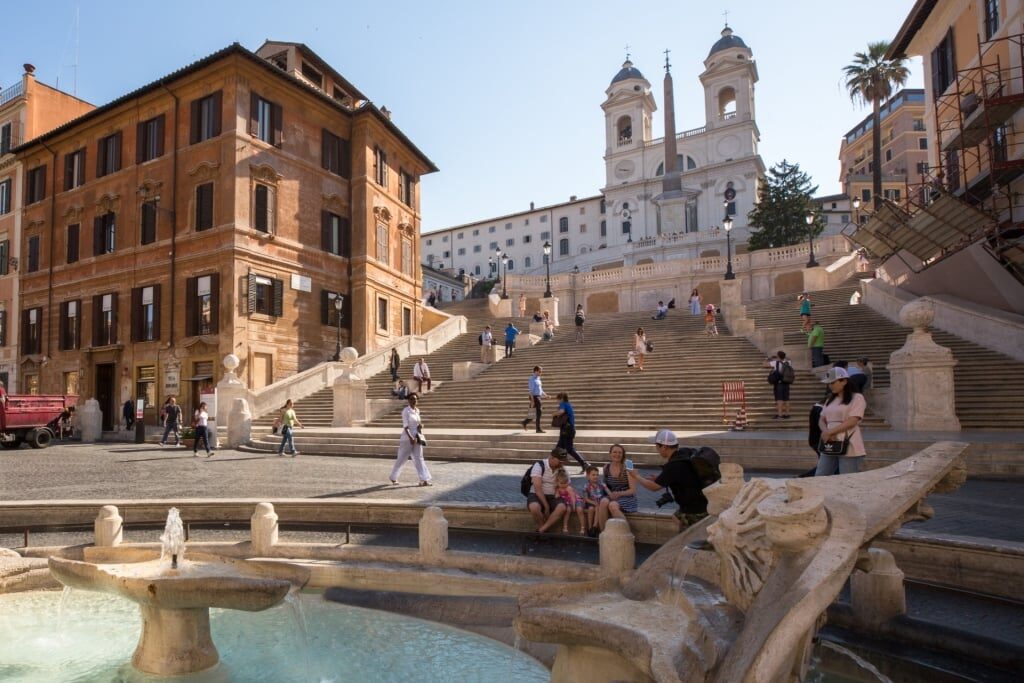
Spanish Steps, Rome
Try to choose a day pack with a hidden pocket for valuables, or keep your wallet elsewhere about your person. While Italy is a safe country, pickpockets can be active in the busiest tourist hotspots like the Spanish Steps in Rome.
Portable charger
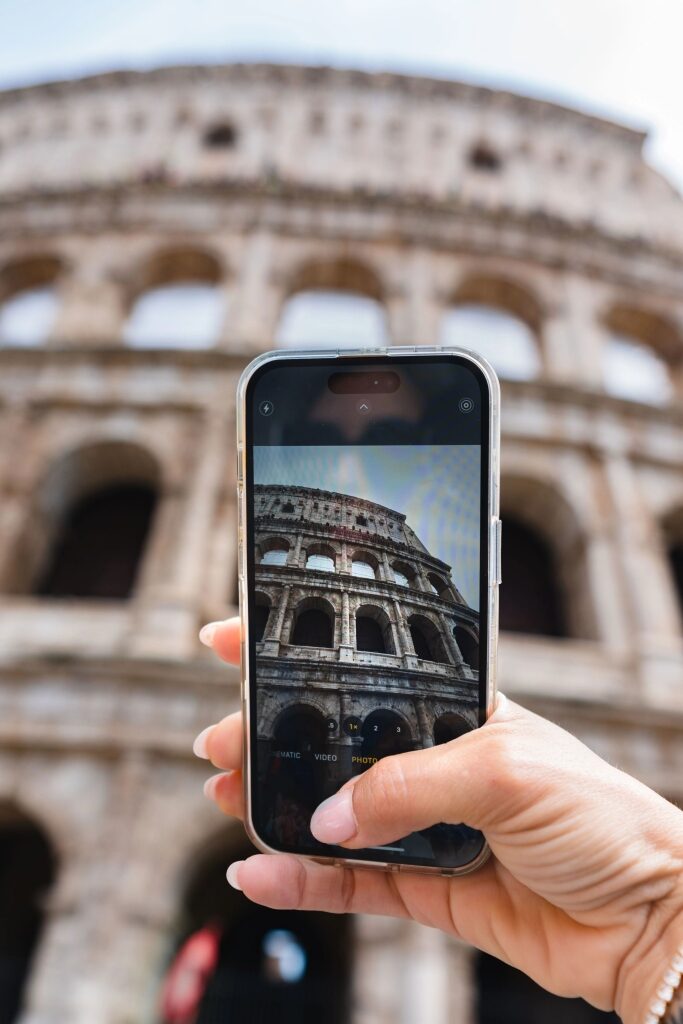
Colosseum, Rome
Keeping your phone charged up is always a consideration these days, especially with it doubling up as your map, camera, and even your translator.
Portable chargers come in many different sizes and capacities, but you can also add unnecessary weight to your pack if you bring along a charger larger than your needs. Think portability and probably enough charge for at least one full phone battery, or two if you’re traveling with a partner.
If you can find one with fast charging capability as well, that’s a bonus.
Outlet adapter

Outlet adapter
An outlet adapter is even more essential than it used to be, with so much of our lives carried in our smartphones or tablets. A good quality international adapter can seem pricey, but you’re quickly paid back in peace of mind, especially if you travel regularly.
Most also come with extra USB ports, so nowadays you can charge multiple devices simultaneously.
Water Bottle
Another one of those essential items, a reusable water bottle is an important piece of the puzzle when thinking about what to pack for Italy. Not only is it environmentally friendly, but the act of having to refill your bottle works well as a reminder to bring refreshments for your Tuscan walking tour/Ligurian beach day/Roman shopping bonanza.
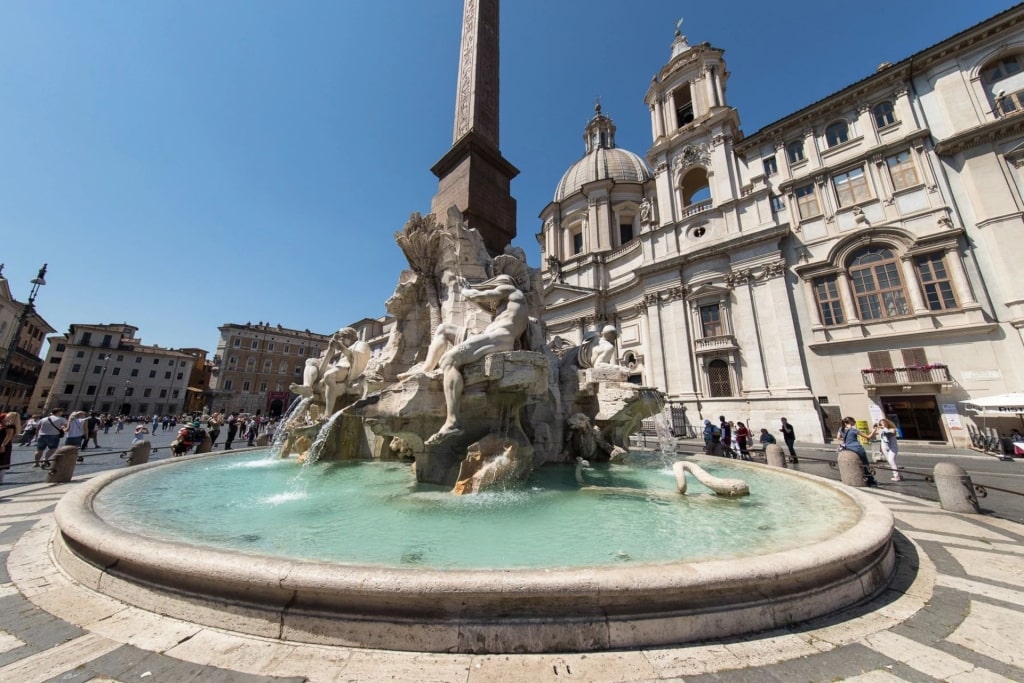
Fountain in Rome
The tap water in Italy is generally potable, but it’s good to remember to check with someone before refilling from a tap in a new destination. Throughout many of its cities, Italians also safely refill from the numerous public fountains.
Extra Luggage
When thinking about what to pack for Italy, it’s important to consider what you might be returning home with. Handwoven blankets, artisan leather sandals, slim-necked bottles of limoncello—your return journey is just made that much easier if there’s space in your luggage where such precious items can be easily slipped.
Packing an extra bag is helpful, into which you can stash all of your new goodies. Or use this consideration as a way of helping you resist packing every item in your wardrobe.
Italy Packing List FAQs
What can I not bring to Italy?
Items out of the ordinary to consider are meat and dairy products that aren’t from within the EU. You should also check the list of fruits and vegetables that aren’t allowed to be brought in due to the risk of diseases or pests.
And you can’t smuggle a pooch or beloved cat in without having jumped through various hoops. Check with your trip provider or the website of the Italian government for more details.
Do tourists wear jeans in Italy?
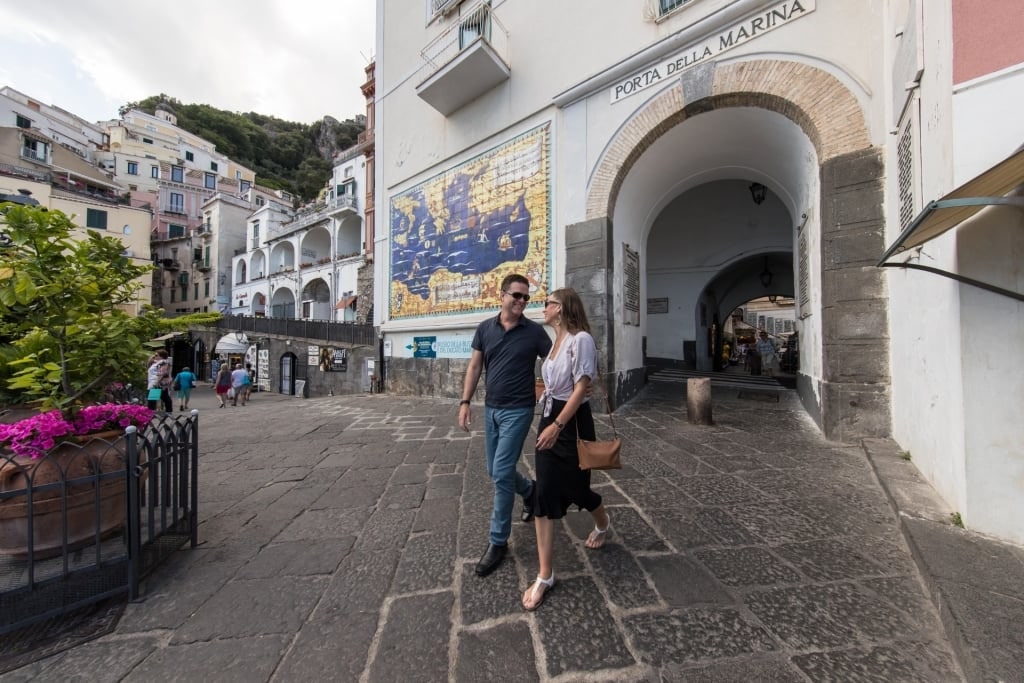
Amalfi
Jeans are hugely popular in Italy. Many major labels in the country produce jeans that are sold around the world, and you’ll find Italians clad in jeans even in weather when you would have thought shorts were essential.
So, if you feel like wearing jeans, go for it. Just ensure that they’re appropriate if you’re visiting a high-end restaurant or religious site.
What type of clothing is appropriate for visiting churches and religious sites?

Vatican
The cathedrals, churches, and other religious sites of Italy are some of this culturally rich country’s most extraordinary places. Whether simple and daubed in ancient frescoes, or baroque and hung with works by Renaissance masters, these religious buildings are often still in operation, and much more than just an Italian art museum.
To ensure you don’t cause unintentional offense, and to guarantee entry, it’s smart to suit up in more modest attire. Think knees and shoulders covered, and try to avoid sheer or revealing apparel. Generally, sandals are acceptable, but other open-toed footwear is not. And please remove any hats upon entry.
Do Italians wear open-toed shoes?
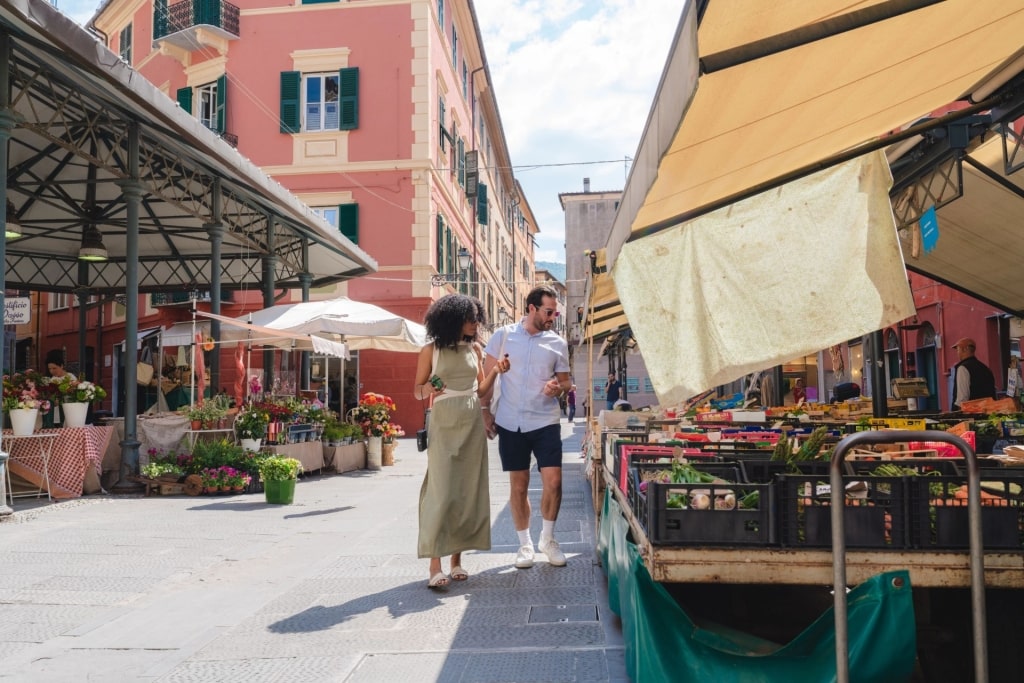
Rapallo
Italians do wear open-toed shoes, and especially sandals, during the warmer months of the year.
Depending on the quality of the sandals, they’re acceptable at an upscale dinner on an Italian beach paired with smart casual attire. Only in formal situations, such as at Sunday mass, would Italians ensure their toes were entirely hidden.
Read: What to Pack for International Travel

Vineyard in Tuscany
Feel like you’ve got a good handle on your Italy packing list? A cruise to this wonderful destination is the perfect way to travel. Browse Celebrity’s cruises to Italy and book your incredible adventure today.
